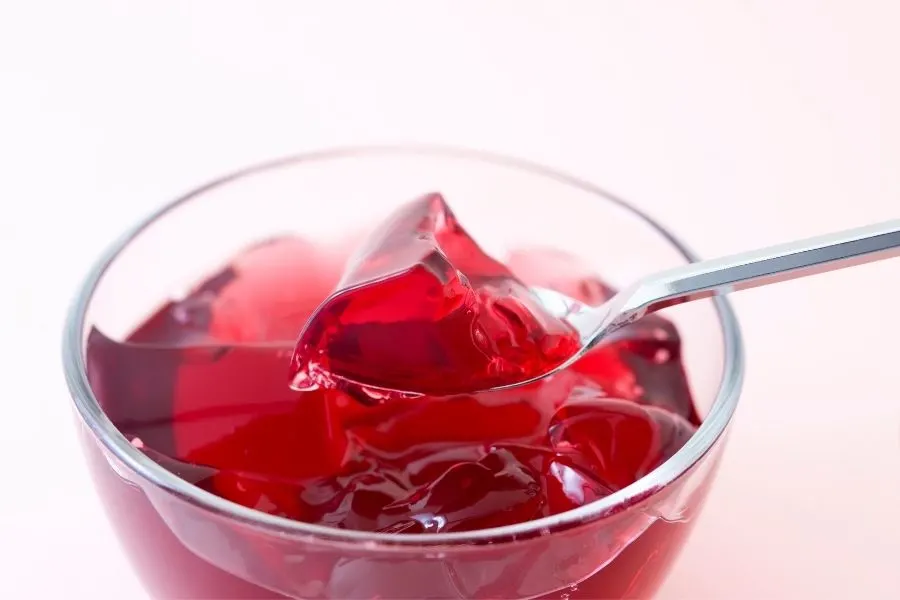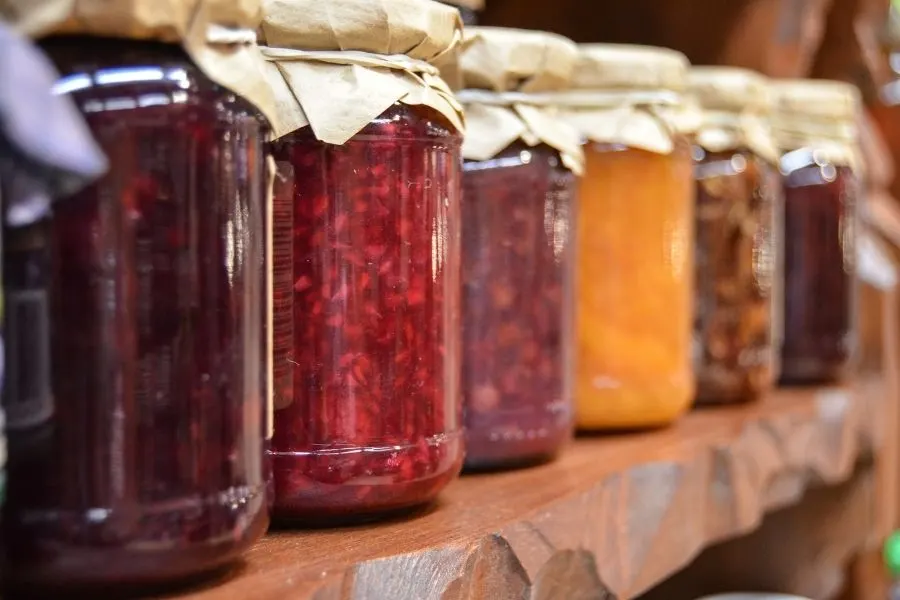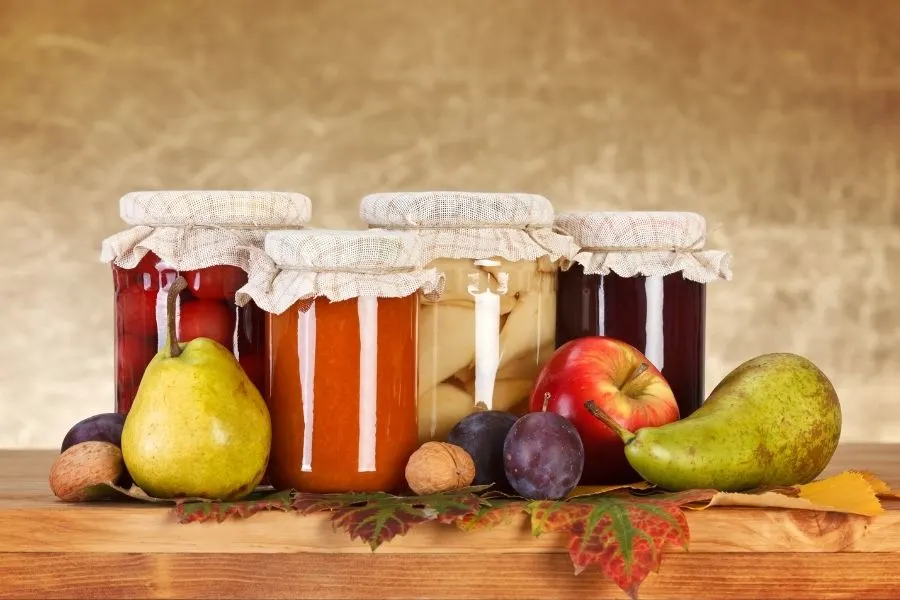Jams, jellies, and preserves are all wonderful ways to use up leftover fruit. And who can refuse a scone with strawberry jam ? But why are there so many names for fruit cooked with sugar, and is there really a difference between them ? Why the different names ? Are they just different names for the same thing, or is there really something you should know about ?
Today we’re taking a look at jams, jellies, and preserves. And we’re taking a peek at marmalade as well, since we’re in the neighborhood. The main curiosity is what the differences are between these delicious fruit spreads. And then whether you can substitute them for one another. Let’s find out !

Jelly vs jam vs preserves
Jellies are the clear, firm version of a fruit spread, without any bits of fruit in them. Jams are fruit spreads that contain fruit in them, though the fruit may be crushed or ground. Jams are less firm than jellies. Preserves is interchangeable with jam according to the US FDA, though some people regard extra chunky jams as preserves.
In all three versions of fruit spreads, the key ingredients are actual fruit and their juices, sugar, acid, and pectin. In jellies the pectin concentration is higher, in order for it to gel and hold its shape.
Jam contains a bit less pectin, since they include the fruit pulp. Prior to cooking, fruit may be halved, crushed, pureed, or simply mashed and them cooked.
Jelly is the clearest, made of fruit juice
When you’re looking at a jar of jelly, you can usually see the light filter through it. This is because there are not chunks of fruit in the jelly, and it means there are no seeds in the spread. This is achieved by only using the fruit juice, rather than the whole fruit. Some recipe call for straining the fruit out of the mixture, though you lose a lot of fruit this way.

Most jellies are made with fruit juice or fruit concentrate, extra pectin (usually commercial), and sugar. In a way it’s like solidified soda, without the carbonation. According to the US FDA jellies are 45% fruit juice and 55% sugar, and it is always significantly more solid than a jam.
Jellies are useful when you’re making desserts where you want to add a fruit layer, but only through color and flavor, without changing the texture too much.
Jam has chunks of actual fruit, is the most common
Because jam is made a bit differently from jelly, it results in a different product. for one thing, jam leaves the fruit in the preserve. The fruit cooks down to a softer consistency. Some brands and home cooks mash the fruit as it cooks, in order to get a smoother feel. In any case, the fact that the fruit is present is undeniable.
Read also: Why Is Jam In Glass Jars ?
Where through jellies you can see the light, through jams you can’t, simply because it has so much fruit content. The overall fruit to sugar ratio in a jam is similar to a jelly – 40/60.
Because there is actual fruit pulp in jams, extra pectin is not usually added. Fresh fruit contain natural pectin, though it depends on the fruit used. Berries are notoriously low in pectin and benefit from a boost of commercial pectin.

Marmalade is a much thicker version of jam
Since we’re discussing all things fruit preserve, we thought we should also cover marmalade. This is also a type of jam, though it results in a much thicker, drier product. This is because it’s usually made from fruit with more fiber (and pectin), and cooked for a bit longer. Common examples are quince marmalade, apple marmalade, orange marmalade.
Some people regard marmalade as being the thicker, dried version of a ja, regardless of the fruit used of the amount of pectin. The key here is consistency. Marmalade is expected to sit on its own, and be very thick and solid. It melts when subjected to heat, just like jelly or jam.
Preserves is a debated term
According to the US FDA preserves are actually the same thing as jams. Then some people regard preserves as being the chunkier versions of jam. The, other people claim preserves to be any sort of fruit spread, or fruit that is cooked with sugar and a bit of liquid (more as a food style than a specific item).

Can you substitute jelly for jam ?
You can substitute jelly for jam in cases where you need to get the right flavor and color, though there are differences in consistency you should keep in mind. Jellies have no fruit in them, so they will easily melt and spread around on a warm bit of toast. The fruit in jam keeps it sticking to one place for longer.
Meanwhile, jam has the fruit still in it, so in cases where the fruit layer must be transparent, it will look different from jelly. Still, the flavor will be there, though the texture will be softer.
Both jam and jelly are great on morning toast or in a PBJ sandwich.
Can you substitute jam for marmalade ?
You can substitute jam for marmalade, though the difference in texture may hinder some recipes. Jam is much softer compared to marmalade, so if you recipe is banking on the marmalade keeping its shape and melting just a little, jam won’t help.
Depending on what ingredients are in your jam and marmalade, you may find a perfect substitute or not. For example orange marmalade is a very common marmalade, but you won’t find orange jam. You may instead find orange jelly, and that might work better.
In short, if you need the marmalade or jam just to get some fruit into the recipe, it does not matter which you use. It could be any sort of fruit spread, and it will work all the same.

